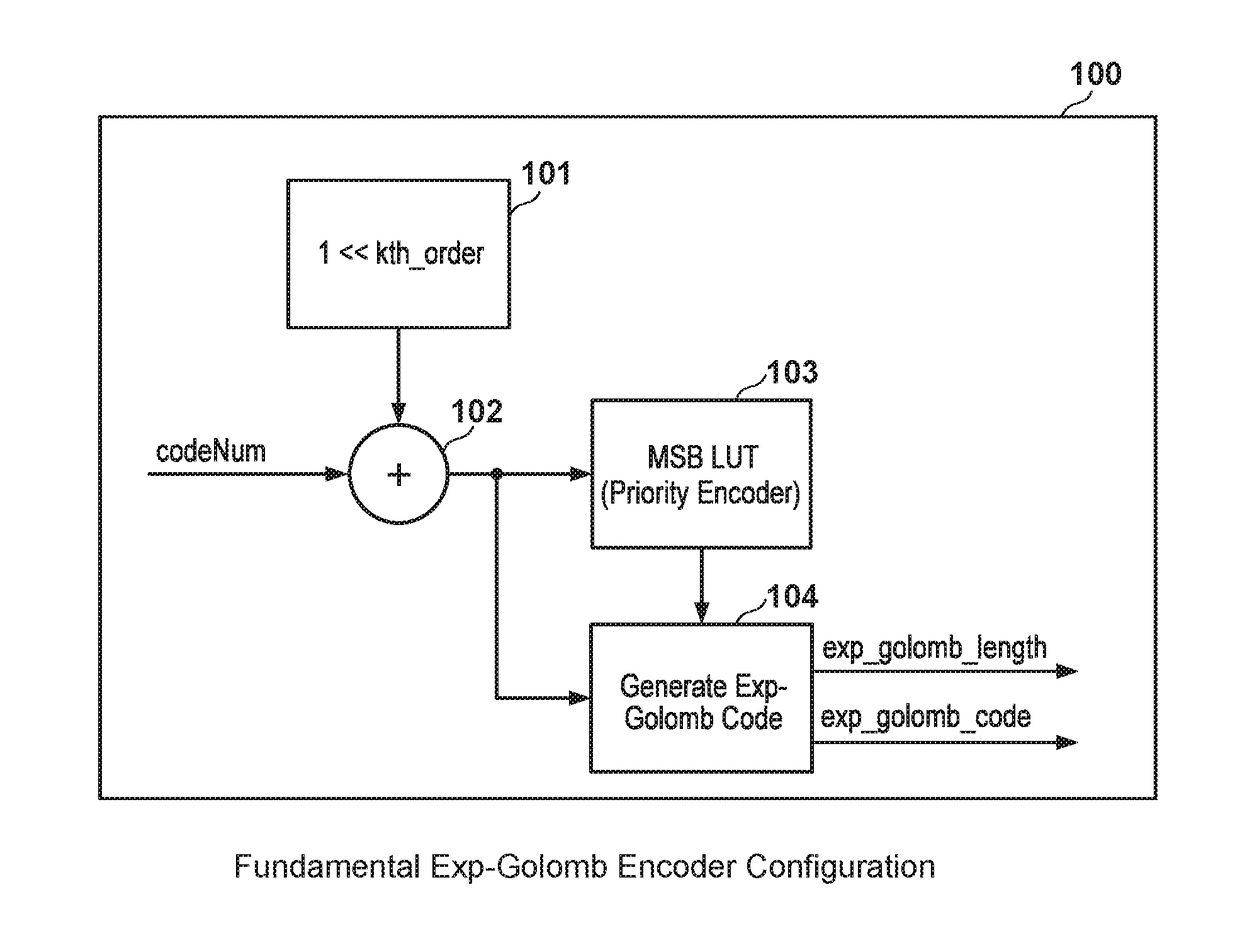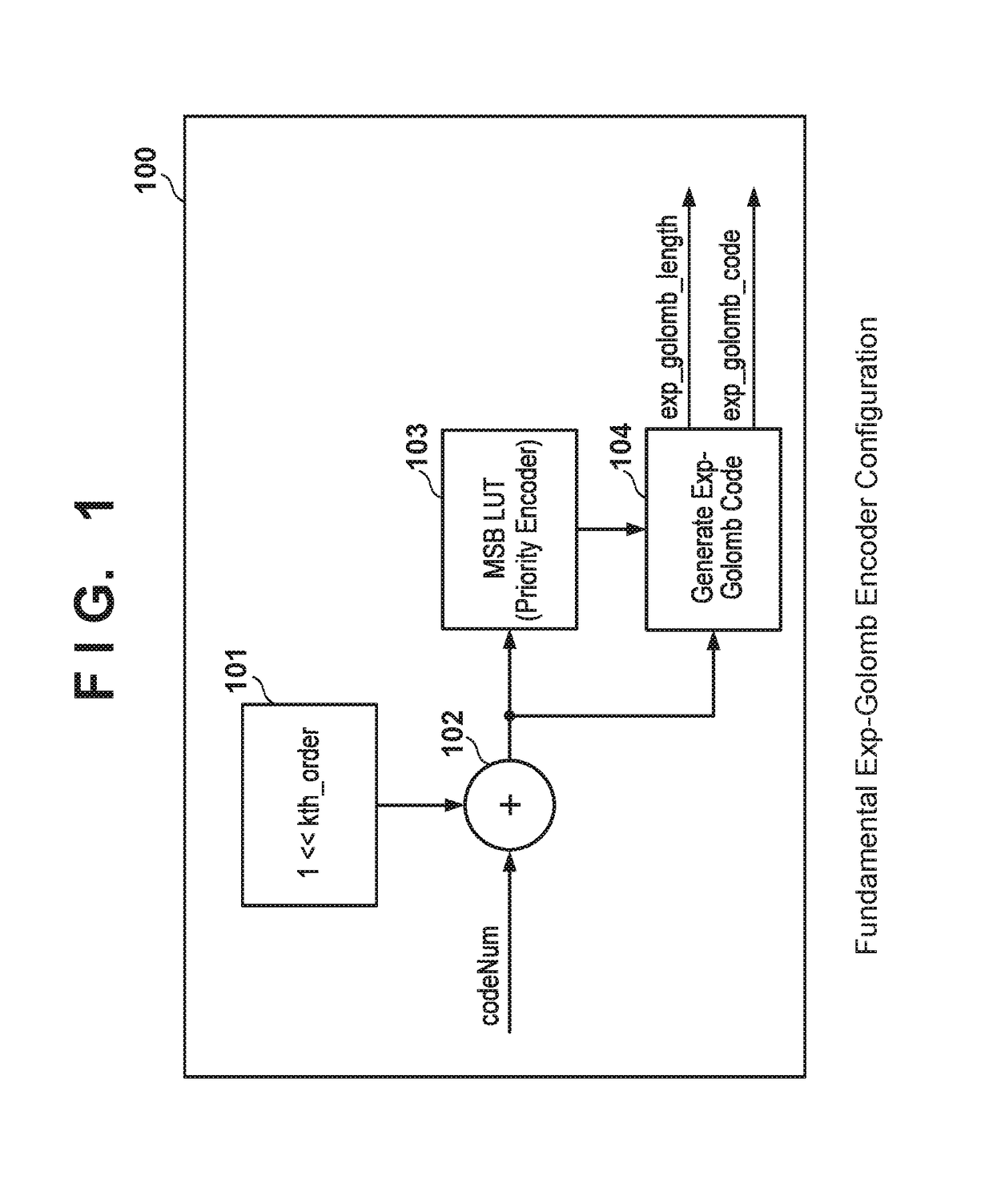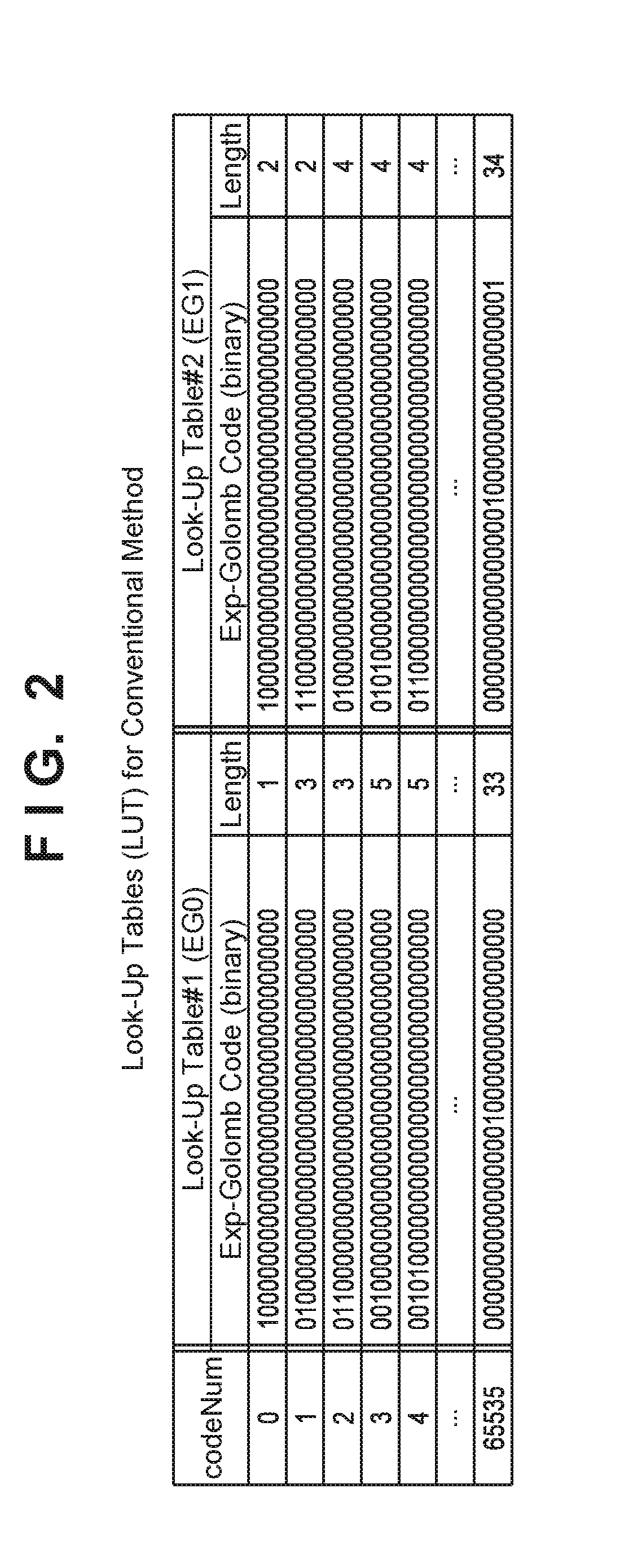Method and apparatus for k-th order exp-golomb binarization
a binarization and exp-golomb technology, applied in the field of binarization schemes, can solve problems such as large circuits
- Summary
- Abstract
- Description
- Claims
- Application Information
AI Technical Summary
Benefits of technology
Problems solved by technology
Method used
Image
Examples
first embodiment
[0031]In reference with FIG. 3, units 301, 302, and 303 corresponds to 101, 102, and 103 respectively. In unit 300, kth-order parameter corresponds to an input signal named as kth_order (801 and 901), and the input integer data corresponds to input_data signal (802 and 902). In this configuration, the codeNum is equal to input_data signal. Unit 303 outputs the msb_pos (807 and 907), which specifies the MSB location of codeNum_mod. Unit 304 concatenates a ‘1’ bit at the LSB side of msb pos to generate shifted_msb_pos (808 and 908) then unit 305 subtracts the k-th order value parameter from shifted_msb_pos to generate Exp-Golomb code length (809 and 909) information. Unit 306 generates the msb_kth_sub (810 and 910) by subtracting the k-th order parameter value from msb_pos. Unit 307 outputs (811 and 911) the Exp-Golomb prefix code word (812 and 912) for the corresponding msb_kth_sub. In parallel with Exp-Golomb prefix code generation, the Exp-Golomb suffix code word bits were extracte...
second embodiment
[0034]Only the difference between this embodiment and the first embodiment will be described below. This embodiment is different from the first embodiment where the k-th order parameter value is set as a configurable parameter, or generic parameter, instead of an input signal. In this embodiment, only one k-th order value is supported per instance. Prior to fabrication of the circuit, the generic parameter is set to a specific value, where the effects of the k-th order parameter value are hardwired into the LUTs, thus reducing the circuit components used to derive Exp-Golomb code word.
[0035]In reference with unit 400 in FIG. 4, units 402, 405, and 407 implementation are exactly the same with 302, 307, and 310 respectively. In this case, since k-th order value is fixed per instance, some components in unit 300 were removed or merged together, which further reduce the circuit size and shorten the critical path. The logic for deriving the offset value does not consume any resource sinc...
third embodiment
[0037]Since the second embodiment generates very small circuit size, supporting additional features can be realized by adding components but still maintaining the synthesizability and performance of the encoder. In this case, logic is added to select the input type as signed input or unsigned input then convert the input to codeNum as described in ITU-T Rec. H.264 or ITU-T Rec. H.265.
[0038]In reference with FIG. 5, units 501, 502, 503, 504, 505, and 506 were the added components to select and convert unsigned or signed input data to codeNum. Then units 507, 508, 509, 510, 511, 512, and 513 were implemented exactly the same as units 401, 402, 403, 404, 405, 406, and 407 respectively.
[0039]For the codeNum conversion logic, units 501 and 503 do not consume any resource since signal sampling and splicing were performed by respective units. For signed input operation, unit 501 samples the left most bit of the input data to determine if current value is positive or negative. Units 502 and...
PUM
 Login to View More
Login to View More Abstract
Description
Claims
Application Information
 Login to View More
Login to View More - R&D
- Intellectual Property
- Life Sciences
- Materials
- Tech Scout
- Unparalleled Data Quality
- Higher Quality Content
- 60% Fewer Hallucinations
Browse by: Latest US Patents, China's latest patents, Technical Efficacy Thesaurus, Application Domain, Technology Topic, Popular Technical Reports.
© 2025 PatSnap. All rights reserved.Legal|Privacy policy|Modern Slavery Act Transparency Statement|Sitemap|About US| Contact US: help@patsnap.com



